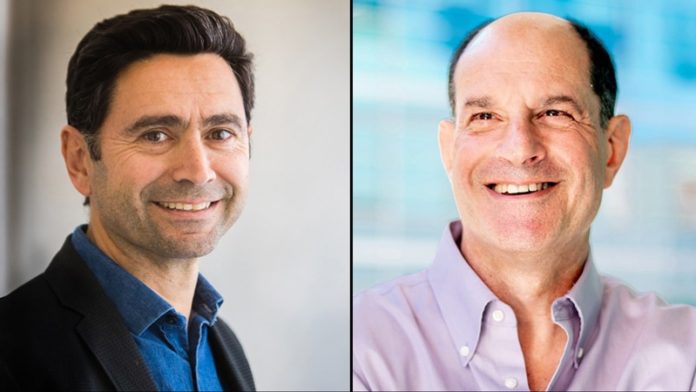- NATURE BRIEFING
You have full access to this article via your institution.
Hello Nature readers, would you like to get this Briefing in your inbox free every day? Sign up here.
Physiologist David Julius and molecular biologist Ardem Patapoutian have won the Nobel Prize in Physiology or Medicine for discovering the molecular basis for our ability to sense temperature and touch. Julius used capsaicin — the compound that gives chili peppers their kick — to track down a protein called TRPV1 that responds to painful heat. Patapoutian identified receptors in skin and other organs that respond to mechanical forces, such as those generated by touch and pressure.
Read more: The quest to decipher how the body’s cells sense touch (Nature | 11 min read, from 2020
NASA has decided not to rename its soon-to-be-launched flagship observatory, the James Webb Space Telescope, after investigating whether its namesake, former NASA administrator James Webb, was involved in persecuting gay and lesbian people in the 1950s and 1960s. The agency says it found no evidence to support the allegations. NASA did not share detailed results of the investigation, leaving some astronomers feeling frustrated. “For all the institution’s talk of equity and diversity, they don’t seem to be particularly concerned with public accountability about sensitive issues that have impacted a historically marginalized group,” write a group of four astronomers who led the petition for the telescope to be renamed.
An antiviral pill called molnupiravir has been shown to cut the risk of hospitalization or death in half for people newly diagnosed with COVID-19, say its makers. Merck (called MSD outside the United States and Canada) and Ridgeback Biotherapeutics developed the drug. Interim data, which have not yet been peer-reviewed, were collected from more than 700 people who had laboratory-confirmed mild to moderate COVID-19 and at least one risk factor associated with poor disease outcomes. Among those who received molnupiravir soon after infection, 7.3% were hospitalized or died within 29 days, compared with 14.1% of those who received a placebo. The treatment is a pill — a big advantage over antiviral injections that work against COVID-19, such as remdesivir.
Reference: Merck press release
Features & opinion
On 15 September, the post-sunset launch of SpaceX’s Inspiration4 capsule created this ‘space jellyfish’, a photographic phenomenon in which gases from a rocket’s exhaust are illuminated by the Sun from beneath the horizon.
See more of the month’s sharpest science shots, selected by Nature’s photo team.
For many disabled scientists, academic-research spaces and career pathways remain out of reach, both literally and figuratively. To mark National Disability Employment Awareness Month in the United States (October; a similar UK event, Disability History Month, runs from 18 November to 18 December), four academics with disabilities share tips for coping with daily professional challenges, when to seek resources and support, and how to let colleagues know the best ways to help. “The more successful you are, the more pressure you will feel as a disabled researcher… because you challenge your peers’ normative view of what a successful scientist should look like,” says Vivian Cheung, an RNA biologist and paediatric neurologist. “But to change the norm, we need more disabled scientists as role models.”
Before dawn on New Year’s Eve 2019, vaccinologist Barney Graham was catching up on the news about the coronavirus infections spreading in China. “FYI. Get ready for 2020,” he wrote in an e-mail to Kizzmekia Corbett, his colleague at the US National Institute of Allergy and Infectious Diseases, forwarding a story about the outbreak. Graham’s soft-spoken, diversity-focused leadership had built a team that was uniquely prepared to produce a vaccine against a new pandemic coronavirus in record time.
doi: https://doi.org/10.1038/d41586-021-02717-x
On Friday, our peripatetic penguin was relaxing near an alpine tarn in Mount Field National Park in Australia. Did you find Leif Penguinson? When you’re ready, here’s the answer.
Last week, we shared some examples of the impact of Nature’s opinion and journalism articles and asked you to tell us if something you read here has changed your research, how you work, or who you collaborate with. Thank you to all who have responded — we’d love to hear more at impact@nature.com.
Related Articles









